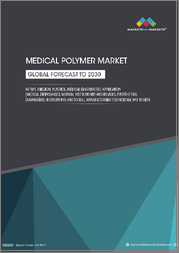
|
시장보고서
상품코드
1618195
재생 엘라스토머 기회 및 촉진요인, 산업 동향 분석 및 예측(2024-2032년)Recycled Elastomers Market Opportunity, Growth Drivers, Industry Trend Analysis, and Forecast 2024-2032 |
||||||
재생 엘라스토머 세계 시장 규모는 2023년 51억 달러로 평가되었고, 환경 인식이 높아지고 지속 가능한 소재에 대한 선호도가 높아짐에 따라 2024년부터 2032년까지 연평균 12.5% 성장할 것으로 예상됩니다. 기업과 소비자가 환경 친화적인 행동을 점점 더 우선순위에 두면서 재생 엘라스토머를 포함한 지속 가능한 대체 재료에 대한 수요가 지속적으로 증가하고 있으며, 제조업체들이 보다 친환경적인 솔루션을 채택하도록 장려하고 있습니다. 재생 및 순환 경제를 지지하는 정부의 규제와 정책은 이 시장의 성장을 가속하고 있습니다. 각국 정부는 폐기물 관리 규제를 강화하고 재생 소재 사용을 장려하고 있으며, 이에 따라 기업들은 첨단 재생 기술과 공정에 투자할 인센티브를 얻고 있습니다.
재생 엘라스토머 중 스티렌 부타디엔 고무(SBR)는 33억 달러에 달하며 2032년까지 13.6%의 연평균 복합 성장률(CAGR)을 나타낼 전망입니다. 이 소재는 타이어 및 자동차 부품에 광범위하게 사용되기 때문에 여전히 인기있는 선택이며, 이는 산업의 지속 가능한 대체품으로의 전환을 반영합니다. 니트릴 부타디엔 고무는 내구성과 내유성으로 인해 특히 자동차 및 산업 분야에서 그 중요성이 증가하고 있습니다. 프로파일렌 고무와 클로로프렌 고무는 접착제 및 밀봉재와 같은 특수 용도에 적합한 고유한 특성을 가지고 있어 필수적인 재료로 부상하고 있습니다. 용도별로는 2023년 24.4%, 12억 달러 규모 시장 점유율을 차지한 인프라 부문이 2032년까지 연평균 10.6%의 성장률을 나타낼 것으로 예상됩니다. 재생 엘라스토머는 지속가능성에 대한 관심 증가에 힘입어 다양한 부문에서 채택되고 있습니다.
의료 분야에서는 이러한 소재가 장비 제조에 활용되어 비용 효율적이면서도 안전한 솔루션을 제공합니다. 농업 분야에서는 재생 엘라스토머가 내구성과 내후성이 뛰어난 제품을 만들어 친환경 농법을 지원하고 있습니다. 스포츠 산업에서는 재생 엘라스토머가 운동 장비에 적용되어 성능은 유지하면서 환경에 미치는 영향은 줄이고 있습니다. 또한, 재생 엘라스토머는 운동장 노면에도 점점 더 많이 사용되어 안전과 환경적 이점을 모두 증진시키고 있습니다.
| 시장 범위 | |
|---|---|
| 시작 연도 | 2023년 |
| 예측 연도 | 2024-2032년 |
| 시작 가격 | 51억 달러 |
| 예상 가격 | 114억 달러 |
| CAGR | 12.5% |
지역별로 보면, 미국의 재생 엘라스토머 시장은 2032년까지 연평균 13%의 성장률로 60억 달러에 달할 것으로 예상됩니다. 북미 시장의 성장은 엄격한 환경 규제와 특히 자동차 및 건설 산업에서 지속가능성에 대한 강력한 약속이 주요 요인으로 작용하고 있습니다. 유럽은 재생 인프라가 발달하고 순환 경제에 대한 약속을 활용하여 다양한 산업에서 재생 재료의 채택을 촉진하고 있습니다.
목차
제1장 조사 방법과 조사 범위
제2장 주요 요약
제3장 산업 인사이트
- 생태계 분석
- 밸류체인에 영향을 미치는 요인
- 이익률 분석
- 변혁
- 향후 전망
- 제조업체
- 유통업체
- 공급업체 상황
- 이익률 분석
- 주요 뉴스
- 규제 상황
- 영향요인
- 산업에 대한 영향요인
- 성장 촉진요인
- 환경 의식의 고양과 지속가능성에의 대처
- 재생과 순환 경제를 촉진하는 규제 지원과 시책
- 자동차나 건설등의 주요 산업에서의 수요 증가
- 시장이 해결해야 할 과제
- 고품질 재생 엘라스토머 가용성이 한정되어 있는 것
- 재생 기술에 수반하는 초기 비용 상승
- 성장 촉진요인
- 규제와 시장에 대한 영향
- Porter's Five Forces 분석
- PESTEL 분석
제4장 경쟁 구도
- 서론
- 기업 점유율 분석
- 경쟁 포지셔닝 매트릭스
- 전략 전망 매트릭스
제5장 시장 규모와 예측 : 원료별, 2021-2032년
- 주요 동향
- 스티렌부타디엔고무
- 니트릴 부타디엔 고무
- 프로파일렌 고무
- 클로로프렌 고무
- 천연 고무
- 폴리우레탄 고무
- 기타
제6장 시장 규모와 예측 : 용도별, 2021-2032년
- 주요 동향
- 인프라
- 운동장 표면
- 홈&가든
- 스포츠
- 농업
- 의료
- 기타
제7장 시장 규모와 예측 : 지역별, 2021-2032년
- 주요 동향
- 북미
- 미국
- 캐나다
- 유럽
- 독일
- 영국
- 프랑스
- 이탈리아
- 스페인
- 러시아
- 아시아태평양
- 중국
- 인도
- 일본
- 한국
- 호주
- 라틴아메리카
- 브라질
- 멕시코
- 중동 및 아프리카
- 남아프리카공화국
- 사우디아라비아
- 아랍에미리트(UAE)
제8장 기업 개요
- American Recycling Center
- American Tire Recycling
- Austin Rubber Company LLC
- Genan Holding
- Green Rubber Global
- GRP Ltd.
- J. Allcock & Sons Limited
- Klean Industries
- Liberty Tire Recycling
- Monmouth Rubber & Plastics Corp.
- RubberForm Recycled Products LLC
- West Coast Rubber Recycling
The Global Recycled Elastomers Market, valued at USD 5.1 billion in 2023, is anticipated to grow at a CAGR of 12.5% from 2024 to 2032, driven by rising environmental awareness and support for sustainable materials. As businesses and consumers increasingly prioritize eco-friendly practices, demand for sustainable alternatives, including recycled elastomers, continues to grow, encouraging manufacturers to adopt greener solutions. Government regulations and policies favoring recycling and the circular economy bolster this market's expansion. Governments globally are enacting stricter waste management regulations and promoting the use of recycled materials, incentivizing companies to invest in advanced recycling technologies and processes.
Among recycled elastomers, Styrene Butadiene Rubber (SBR) is expected to reach USD 3.3 billion, with a projected CAGR of 13.6% through 2032. This material remains a popular choice due to its wide application in tires and automotive components, reflecting the industry's shift towards sustainable alternatives. Nitrile Butadiene Rubber is also attaining importance, especially in automotive and industrial uses, owing to its durability and oil resistance. Propylene and Chloroprene rubbers are emerging as essential materials, each offering unique properties suited to specialized applications in sectors like adhesives and sealants. Based on application, the infrastructure segment, which held a 24.4% market share in 2023, equivalent to USD 1.2 billion, is projected to grow at a 10.6% CAGR through 2032. Recycled elastomers are being adopted across various sectors, driven by the increasing focus on sustainability.
The medical field utilizes these materials in device manufacturing, offering cost-effective yet safe solutions. In agriculture, recycled elastomers create durable, weather-resistant products, supporting eco-friendly farming methods. In the sports industry, these materials are incorporated into athletic gear, reducing environmental impact while maintaining performance. Additionally, recycled elastomers are increasingly being used for playground surfaces, promoting both safety and environmental benefits.
| Market Scope | |
|---|---|
| Start Year | 2023 |
| Forecast Year | 2024-2032 |
| Start Value | $5.1 Billion |
| Forecast Value | $11.4 Billion |
| CAGR | 12.5% |
Regionally, the U.S. recycled elastomers market is forecasted to reach USD 6 billion by 2032, with a CAGR of 13%. Growth in the North American market is primarily driven by stringent environmental regulations and a strong commitment to sustainability, particularly in the automotive and construction industries. Europe follows closely, leveraging its well-developed recycling infrastructure and commitment to a circular economy, driving the adoption of recycled materials across various industries.
Table of Contents
Chapter 1 Methodology & Scope
- 1.1 Market scope & definition
- 1.2 Base estimates & calculations
- 1.3 Forecast calculation
- 1.4 Data sources
- 1.4.1 Primary
- 1.4.2 Secondary
- 1.4.2.1 Paid sources
- 1.4.2.2 Public sources
Chapter 2 Executive Summary
- 2.1 Industry synopsis, 2021-2032
Chapter 3 Industry Insights
- 3.1 Industry ecosystem analysis
- 3.1.1 Factor affecting the value chain
- 3.1.2 Profit margin analysis
- 3.1.3 Disruptions
- 3.1.4 Future outlook
- 3.1.5 Manufacturers
- 3.1.6 Distributors
- 3.2 Supplier landscape
- 3.3 Profit margin analysis
- 3.4 Key news & initiatives
- 3.5 Regulatory landscape
- 3.6 Impact forces
- 3.7 Industry impact forces
- 3.7.1 Growth drivers
- 3.7.1.1 Increasing environmental awareness and sustainability initiatives
- 3.7.1.2 Regulatory support and policies promoting recycling and circular economy
- 3.7.1.3 Growing demand from key industries like automotive and construction
- 3.7.2 Market challenges
- 3.7.2.1 Limited availability of high-quality recycled elastomers
- 3.7.2.2 Higher initial costs associated with recycling technologies
- 3.7.1 Growth drivers
- 3.8 Regulations & market impact
- 3.9 Porter's analysis
- 3.10 PESTEL analysis
Chapter 4 Competitive Landscape, 2023
- 4.1 Introduction
- 4.2 Company market share analysis
- 4.3 Competitive positioning matrix
- 4.4 Strategic outlook matrix
Chapter 5 Market Size and Forecast, By Raw Material, 2021-2032 (USD Billion) (Kilo Tons)
- 5.1 Key trends
- 5.2 Styrene butadiene rubber
- 5.3 Nitrile butadiene rubber
- 5.4 Propylene rubber
- 5.5 Chloroprene rubber
- 5.6 Natural rubber
- 5.7 Polyurethane rubber
- 5.8 Others
Chapter 6 Market Size and Forecast, By Application, 2021-2032 (USD Billion) (Kilo Tons)
- 6.1 Key trends
- 6.2 Infrastructure
- 6.3 Playground surfaces
- 6.4 Home & garden
- 6.5 Sports
- 6.6 Agriculture
- 6.7 Medical
- 6.8 Others
Chapter 7 Market Size and Forecast, By Region, 2021-2032 (USD Billion) (Kilo Tons)
- 7.1 Key trends
- 7.2 North America
- 7.2.1 U.S.
- 7.2.2 Canada
- 7.3 Europe
- 7.3.1 Germany
- 7.3.2 UK
- 7.3.3 France
- 7.3.4 Italy
- 7.3.5 Spain
- 7.3.6 Russia
- 7.4 Asia Pacific
- 7.4.1 China
- 7.4.2 India
- 7.4.3 Japan
- 7.4.4 South Korea
- 7.4.5 Australia
- 7.5 Latin America
- 7.5.1 Brazil
- 7.5.2 Mexico
- 7.6 MEA
- 7.6.1 South Africa
- 7.6.2 Saudi Arabia
- 7.6.3 UAE
Chapter 8 Company Profiles
- 8.1 American Recycling Center
- 8.2 American Tire Recycling
- 8.3 Austin Rubber Company LLC
- 8.4 Genan Holding
- 8.5 Green Rubber Global
- 8.6 GRP Ltd.
- 8.7 J. Allcock & Sons Limited
- 8.8 Klean Industries
- 8.9 Liberty Tire Recycling
- 8.10 Monmouth Rubber & Plastics Corp.
- 8.11 RubberForm Recycled Products LLC
- 8.12 West Coast Rubber Recycling



















